Homeowner Newsletter: Winter 2015-2016
©2015 Jeffrey C. May
Well, this is the holiday season. Neighbors drop by, family members come to visit, and all that cooking, cooking, cooking, and shopping, shopping, shopping. An exhilarating but also exhausting time of year.
If your family is like my family, and your neighborhood is like mine, you are probably expecting a lot of traffic in your home during the holidays. When the holidays are over, the guests have gone, the dishes cleaned, and the leftovers eaten or stored in the freezer for another day, you may be faced with a lot of cleaning work.
As you prepare to settle back into your usual daily routine, I’d like to give you some tips on getting your house back in order – tips that could also help you improve the indoor air quality of your home.
First, if you celebrate Christmas and had a real tree inside, don’t keep it too long after the holidays. Christmas trees get moldy after a while, so when the holidays are over, get rid of the tree.
Vacuum up any needles that may have fallen on the floor when you removed the tree from your home. If you have hot-air heat, check the boots at floor level (the areas beneath the registers), and if needles fell into the boots, vacuum up those areas.
In addition to pine needles, I’ve found cookie crumbs, pieces of candy, and even dog food in boots.
Speaking of vacuuming, conventional vacuum cleaners spew particulates (moldy dust, pet dander, etc.) out in the exhaust stream. Use a vacuum with a HEPA filter, and be sure the vacuum has a bag.
If you’ve been using a bagless vacuum, don’t empty the canister indoors; you’ll just be spreading some of the dust that you just vacuumed up back into the air in your home.
If you hire outside cleaners, insist they use your HEPA-filtered vacuum instead of their own; otherwise, cat or dog dander, or even mold spores that they vacuumed up in other homes they cleaned can be emitted into the air in your own home.
If you have a central vacuum system, be sure that it exhausts to the exterior, and not into your garage or basement.
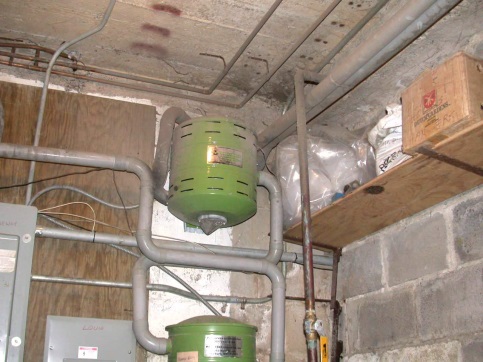
Now is a good time to clean surfaces that you might not ordinarily think about, especially in the kitchen – a room in your home that will probably be used a lot during the holiday season.
Start with the kick spaces of your kitchen cabinets. These areas collect biodegradable dust, and when dampened by floor mopping, can become moldy. HEPA vacuum these surfaces first, and then wipe with an appropriate detergent solution.
And while you’re at it, remove the products you store under your kitchen sink and inspect the cabinet. If there is mildew present, wipe that area with a dilute bleach solution (one part bleach to ten parts water) or with any suitable cleaning product.
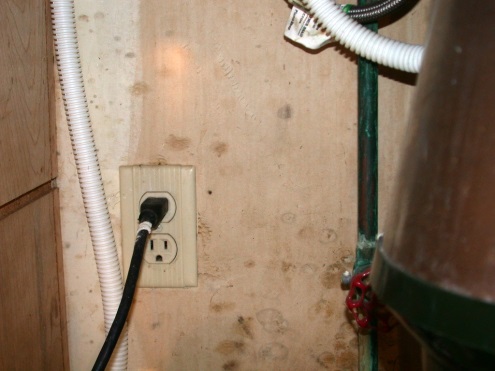
Be sure there are no signs of a pipe leak present. Also check that water hasn’t been leaking down into the cabinet from around the fixtures above, or from the joint between the backsplash and counter top. (Using a mirror and flashlight, look for moisture stains at the bottom of the counter top under the fixtures.) In the future, store fewer goods under your kitchen sink, so you can inspect the area now and then for leaks and mold growth. It’s also a good idea to put stored items in open plastic bins; this makes it easier for you to move the goods in and out of the cabinet.
Appliances that create air flows can spread contaminants. Roll your refrigerator out so you can clean the top, bottom, back, and sides (use a 36-inch vacuum crevice tool, available on line, to get to the coils or to hard-to-reach spots). If your refrigerator has an automatic ice maker, be careful not to break or disconnect the line when you move the appliance.
Look for a drip tray at the bottom or back. If the tray is at the bottom, remove the tray for cleaning. If the tray is plastic, put two or three tablespoons of salt in the tray to help inhibit microbial growth (mold, yeast, bacteria). If the drip tray is at the back, you may not be able to remove it. Clean the tray as best you can – either with a dilute bleach solution or with any suitable cleaning product. And don’t put salt in a metal tray!
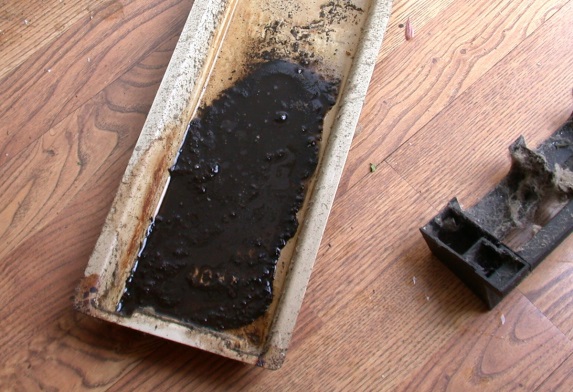
Clean the area in which the refrigerator sits before rolling the appliance back in place. You should tackle this “refrigerator-cleaning” task annually.
If you will be having house or dinner guests over the holidays, you may have a lot of laundry to do after they leave: sheets, towels, table clothes, cloth napkins, etc. If you have allergies, check your laundry detergent to be sure that it doesn’t contain enzymes (protease, amylase, lipase, cellulase, or “stain lifters”). These substances are chemically similar to the enzymes that molds and bacteria produce, and can exacerbate asthma symptom in people who are sensitized.
Avoid using fragranced cleaning products. They may smell great, but fragrances are chemicals. Why add chemicals to the air in your home, especially during a season when you aren’t apt to open up windows to air out the house?
After the holidays, you may not be using all the rooms in your home. You may be tempted to turn down the heat in such rooms. Resist the temptation to reduce the temperature below 60°F, particularly in finished basement rooms, in rooms that are even partially below-grade (such as in a split level house), and in rooms built over a crawl space or garage.
There are a number of mold species that can grow when the relative humidity is over 80% – molds such as the highly friable (easily aerosolized) and potentially allergenic Aspergillus.
I’m a scientist (I can hear the moans!), so at this point, I want to launch into a scientific discussion, which in the end I hope you will view as relevant.
Relative humidity (or RH) is a measure of how much moisture the air at any given temperature can hold. As air cools, its ability to hold moisture decreases, and its RH rises.
Let’s pretend you are holding a closed jar of air. The RH in the jar’s air might be 60%. That means that the air could hold 40% more moisture until it hits the saturation point (100%).
If you took that jar of air and put it in the refrigerator for a half hour or so, the jar and the air it holds would cool. Then the air could hold less moisture. For the sake of this discussion, let’s say that instead of being able to hold 40% more moisture (or be at 60% RH), it could hold only 15% more moisture (or be at 85% RH). If the RH gets high enough and the air hits its saturation point, moisture will begin to condense on the inside surfaces of the jar.
Air that comes in contact with cool surfaces in your home gets cooler, and the RH of that air rises. Such cooler surfaces could include the lower few feet of exterior walls (walls that face the outside) in closets and in above-grade rooms that are under heated; the lower few feet of walls in rooms located over cool crawl spaces or constructed directly on a slab (no basement); and the lower few feet of below-grade or partially below-grade (below ground level) finished rooms. Surfaces that face the cool wall or floor can also acquire mold growth due to loss of heat through radiation.
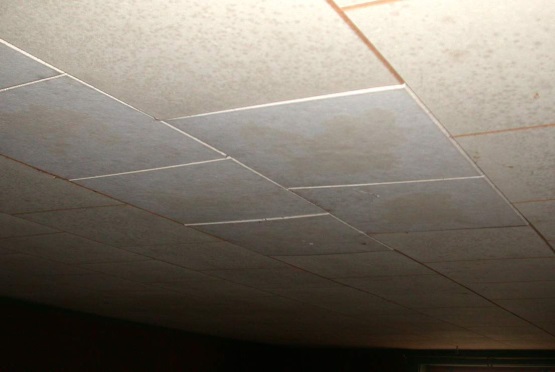
Furniture stored in a musty basement can also acquire mold growth. Unfortunately, a number of my clients stored infant car seats in damp basements when their children outgrew the seats. When the next babies arrived, the car seats were again put to use.
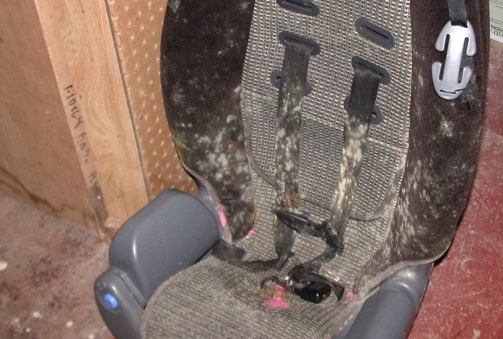
Cushioned goods (even car seats) that contain mold growth should be discarded.
In addition to moisture which can be supplied by elevated RH, microbes need food (like baby’s drool, food bits, and house dust that contains skin scales). We human beings shed skin scales every second, minute and hour – a lot of food for microbes!
The Boston Globe estimates that each of us sheds about a million skin scales a day (http://health.howstuffworks.com/skin-care/information/anatomy/shed-skin-cells.htm).
You can’t stop shedding skin scales, but you can control the RH in your home by keeping habitable rooms consistently warmer, with the thermostat set at a minimum of 60°F. This is particularly important in finished below-grade or partially below-grade spaces, which are naturally cool and damp.
Perhaps one of your New Year’s resolutions is “to lead a healthier life.” I hope this newsletter will help you reach that goal.
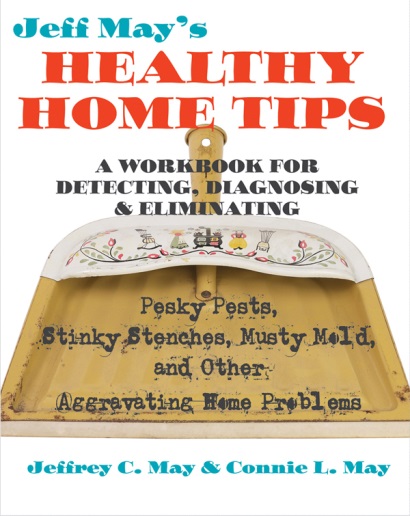
All wishes for a happy and healthy New Year.
Refer to our book Jeff May’s Healthy Home Tips for further guidance; available on amazon.com.
